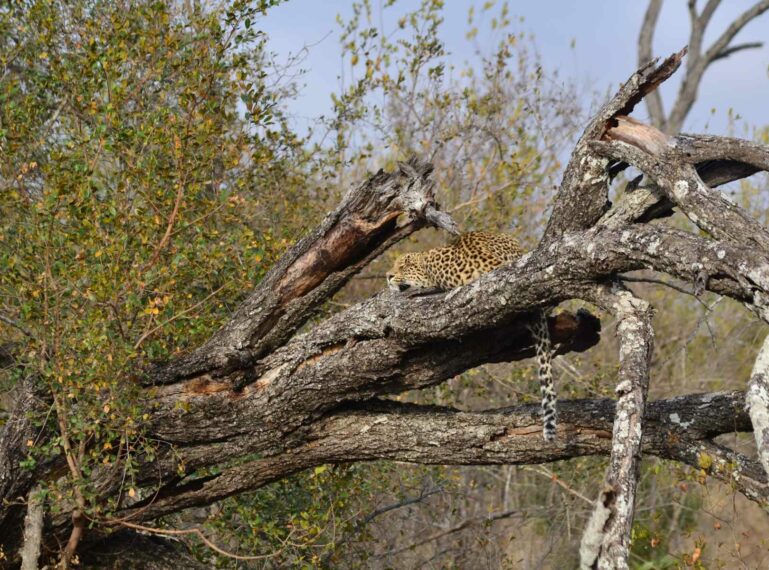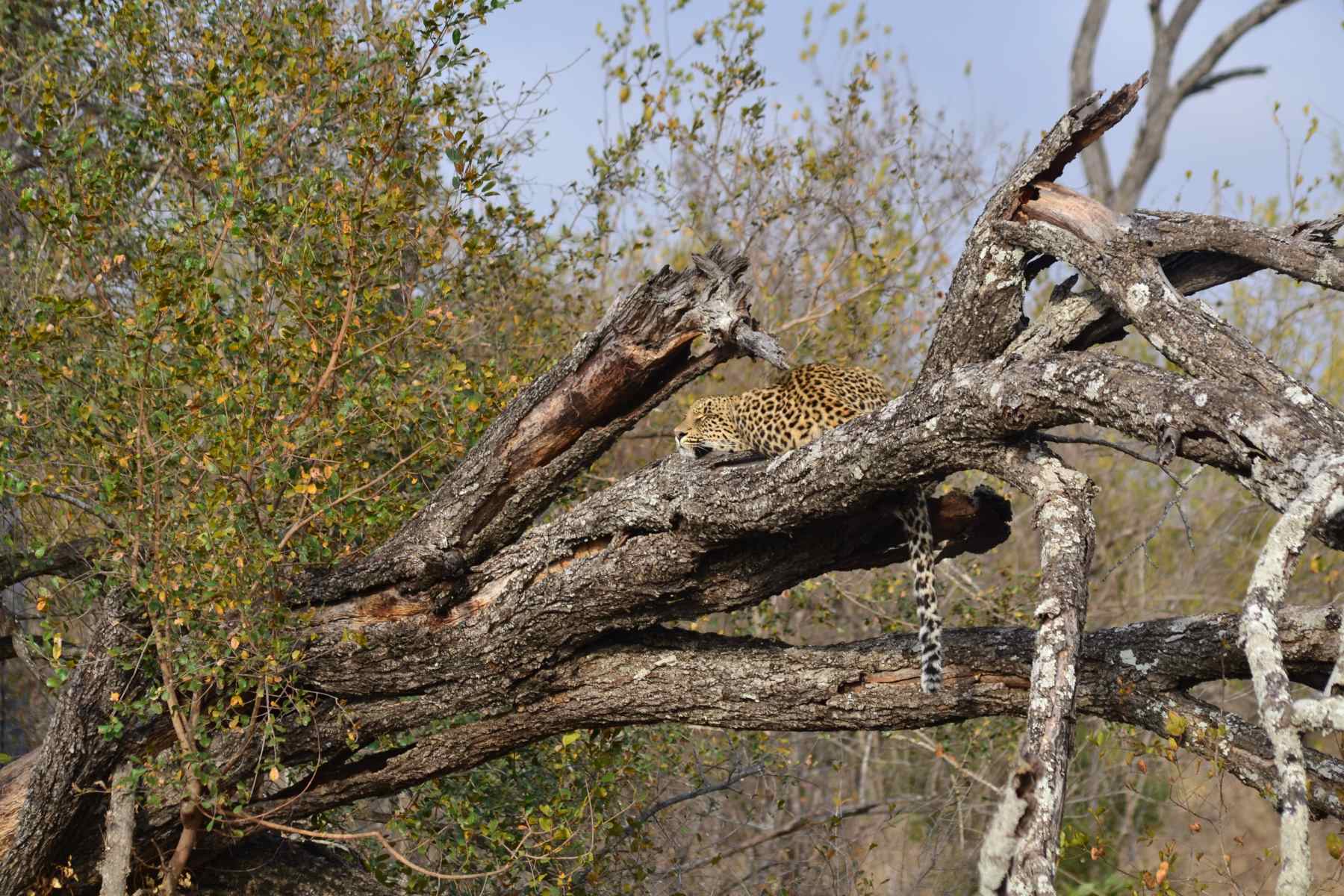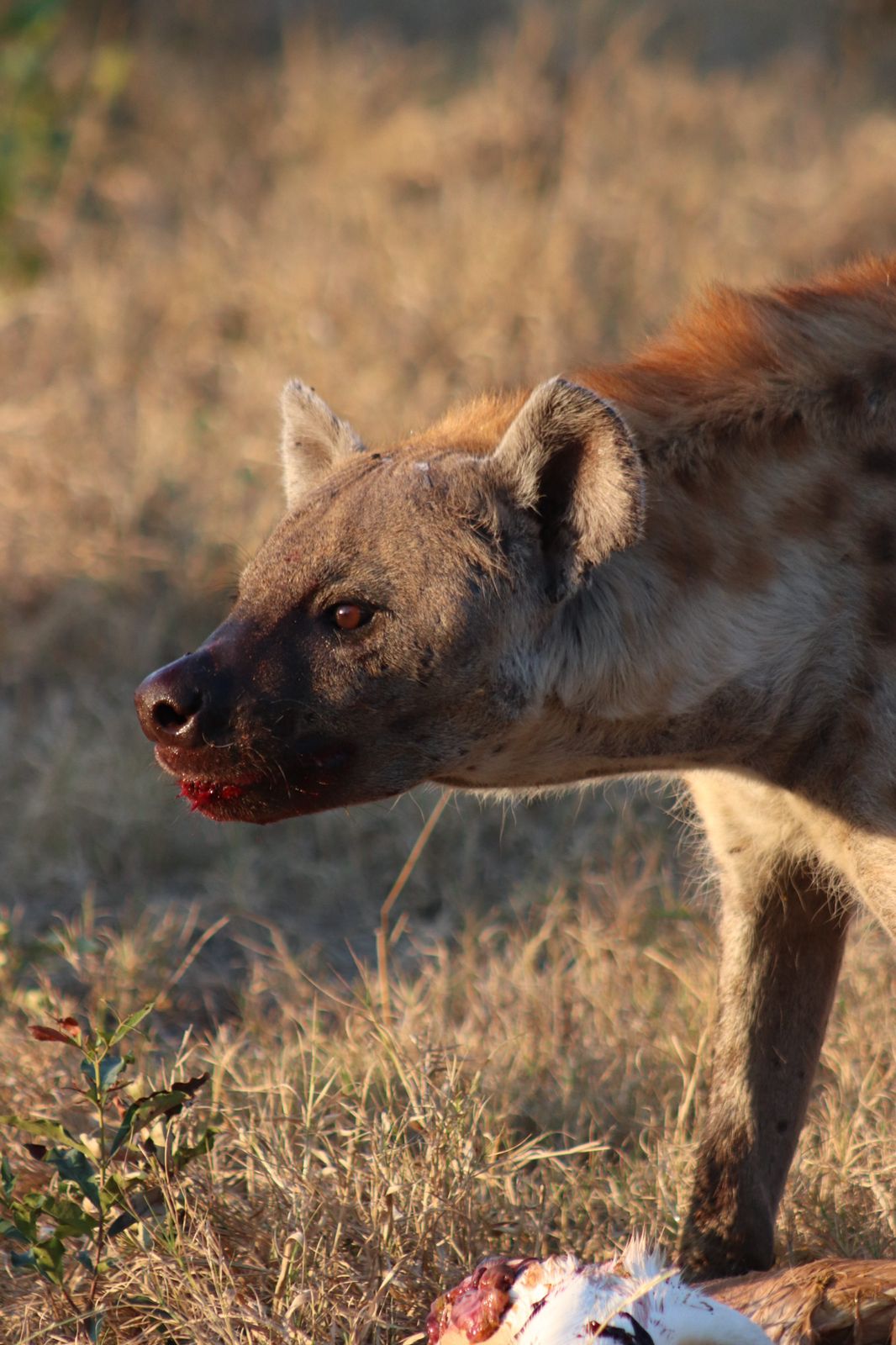
The consistent five-star reviews on TripAdvisor about Umkumbe’s guiding and tracking team testify to their skill in tracking and finding wildlife. But that’s not all—this close-knit team is not only adept at locating wildlife, but they’re also impeccable hosts. The Sun Destinations head office loves nothing more than receiving consistent sighting updates from this intrepid team; their excitement about the wild and sharing their sightings is palpable. Today, we feel the need to share the recent wildlife happenings at Umkumbe Safari Lodge Riverside, with fresh content from the guides showcasing an absolute wildlife extravaganza. Ready for the reveal?
Here are the latest sightings. courtesy of the Umkumbe guides.
Mating leopards
While on the banks of the seasonal Sand River, guide Alex Paine managed to capture a romantic tryst between two leopards. Because leopards are solitary cats, we consider this quite an unusual sighting. When a couple of cats are spotted, it’s usually a mother with her cubs or a male and female in a mating ritual. In fact, seeing mating leopards is probably more rare than seeing a leopardess with her cubs. Females choose their territories based on prey density and availability of den sites, while males have wider territories that overlap with areas where there are females. When they “meet up” , the mating ritual between leopards lasts for up to five days, with mating occurring every 15 minutes —each session lasts for 15 seconds only. Leopards only breed on an annual basis, with females mating for the first time at around two years old.
Here’s Alex’s amazing leopard footage:
Pangolin on the move
Also referred to as the scaly anteater, spotting the critically endangered pangolin is a treasured sighting in the bushveld. Not only are pangolin rare to see, but they’re also shy…and nocturnal. It’s almost like ALL of the elements are against you when you go in search of of a pangolin. And that’s why seeing one in the wild is considered extremely good luck in ancient African folklore.
When spotted, pangolins are usually huddled up safely in a ball, which protects themselves from curious predators. We’ve seen leopards play with pangolins, and get hurt. A pangolin’s scales are layered and razor-sharp, which can leave devasting wounds! Pangolins move at night to hunt for grubs and forage, and remain in their burrows during the day. While at night, pangolins move slowly through the bushveld towards termite mounds where they use their long claws to dig up the mounds for termites and insects. The capture hundreds of these insects and larvae with their sticky tongue, which is a whopping 28 inches long.
Needless to say, seeing a pangolin on the move at Umkumbe was a once-in-a-lifetime sighting. We suspect that the pangolin was en route to a termite mound for a feed. Either way, it was a sighting worthy of documenting.
Scent marking cheetah
The diurnal cheetah moves through the vast savannah of the Sabie Game Reserve during the cooler hours of the day. Unlike their cat counterparts, cheetah don’t have the strength to fight off competition. By hunting and moving around during the lighter hours, they eliminate the competition for prey. These high-speed hunters are typically on the move between the hours of 6:00 – 10:00 and 16:00 – 18:00, which is just the time when most game drives are conducted. When there are abundant leopards and lions around, cheetah tend to retreat. What’s interesting here is that Umkumbe’s traverse is laden with leopards, and yet still the team saw a cheetah.
This lone cheetah was spotted scent marking a fallen tree, while scanning it surroundings for potential danger. Because their strength is speed and not brute force, cheetah would often select an elevated area to give them a vantage point of the landscape. They cannot afford to get attacked by stronger predators.
Yet another awe-inspiring sighting at Umkumbe Safari Lodge Riverside!
Hyena on a kill
We know that hyenas are exceptional scavengers who aren’t fearful of barging through a pride of lions to take their share of the kill. Their skillful, opportunistic behavior is admirable, and they perform a vital function in the wild by cleaning up debris from kill sites. Their bone-crushing jaws and rock-solid digestive systems make them immune to diseases like anthrax, allowing them to digest large bones.
What you might not know, is that hyenas are highly-specialised and successful hunters. They hunt via a method called coarsing, which is the same as African wild dogs. They chase down prey as a clan until the point of exhaustion, and then begin shredding the abdomen area. The guiding team managed to witness a hyena conducting its own kill, which was incredible to watch.
We trust you enjoyed these incredible sightings from Umkumbe Safari Lodge Riverside.


Leave a Comment